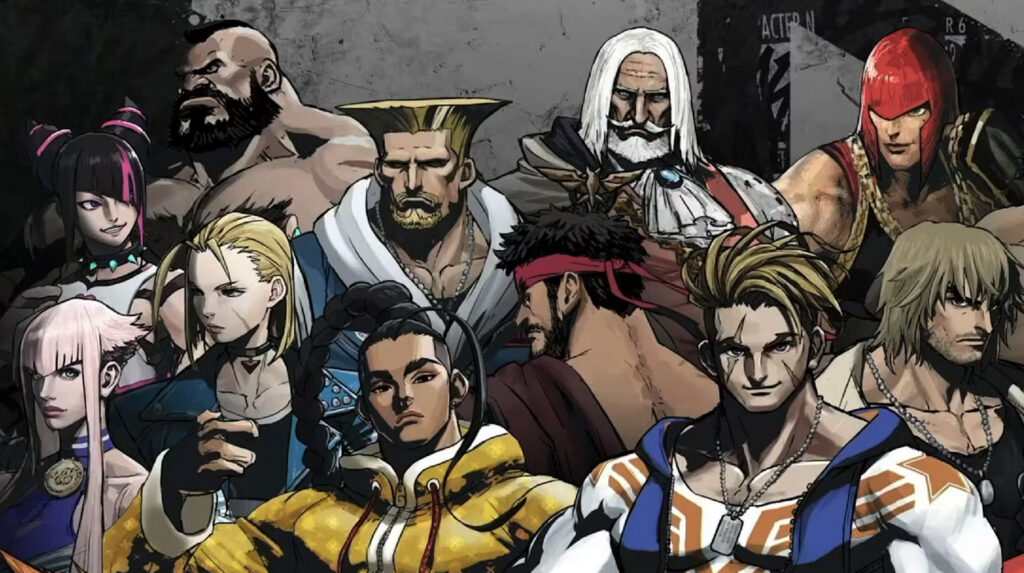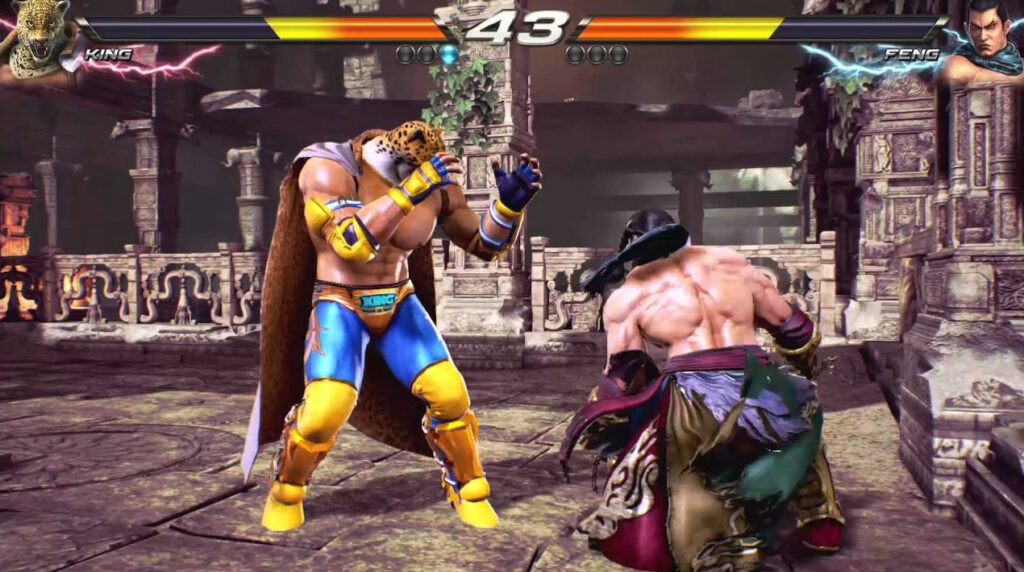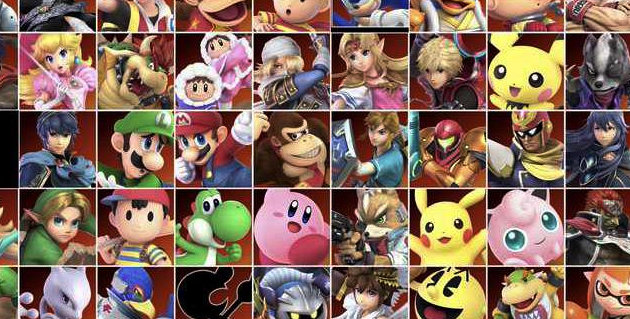Introduction to Fighting Games
Fighting games represent a distinctive genre within the larger realm of video gaming, characterized by one-on-one combat between players. These games typically feature a diverse roster of characters, each with unique abilities, fighting styles, and intricate moves. The primary objective is to deplete the opponent’s health bar through a combination of strategic positioning, timing, and skillful execution of movements and attacks. This integrative gameplay not only demands quick reflexes but also emphasizes the importance of learning character-specific mechanics and understanding an opponent’s strategies.
The origins of fighting games can be traced back to the late 1970s and early 1980s, with classics such as “Karate Champ” and “Street Fighter” laying the groundwork for the genre. The evolution continued with the launch of “Street Fighter II” in 1991, which not only popularized fighting games but also introduced vital features such as combos and special moves. These innovations paved the way for an explosion in the genre’s growth, leading to a plethora of titles that became household names, including “Tekken,” “Mortal Kombat,” and “Guilty Gear”. Over time, these franchises have refined game mechanics, offering richer, multifaceted experiences that resonate with both casual players and highly competitive gamers.
In the contemporary gaming landscape, fighting games have transitioned from arcade cabinets to home consoles and PC platforms, fostering a robust esports environment. Competitive play has become increasingly prevalent, with events, tournaments, and leagues attracting both participants and audiences globally. These competitions highlight not only the technical skills of players but also the cultural aspects and community building that arise from shared enthusiasm for the genre. As fighting games continue to innovate, they stand out for their unique mechanics and engaging gameplay, captivating a diverse range of gamers worldwide.
The Evolution of Esports in Fighting Games
Esports has undergone a significant transformation since its inception, particularly within the fighting game community. The genre, known for its one-on-one combat dynamics, has played a critical role in establishing a vibrant competitive landscape. The journey began in the early 1990s with titles such as “Street Fighter II,” which catalyzed the formation of local arcade tournaments. These grassroots competitions were instrumental in fostering a community, paving the way for larger-scale events.
As technology progressed, so too did the scale of these tournaments. The creation of the Evolution Championship Series (EVO) in 1996 marked a pivotal milestone, providing a prominent platform for fighting games and significantly enhancing their visibility in the esports arena. EVO attracted diverse participants and viewers, establishing a framework for future events and setting a standard for competitive play. The tournament has since expanded to include a variety of titles, generating substantial prize pools and sponsorship deals that have elevated the community’s status within mainstream esports.
During this evolution, several games have emerged as pillars within the fighting game ecosystem. Titles such as “Tekken,” “Mortal Kombat,” and “Super Smash Bros.” not only shaped gameplay mechanics but also curated a loyal following of players and audiences. Iconic moments from these games, showcased in various tournaments, have etched themselves into esports history, contributing to a larger narrative of competitive success. Moreover, as teams and professional players began to rise, the community witnessed the establishment of sponsorships, branding, and the emergence of a dedicated fan base, creating an environment replete with rivalries and dramatic narratives.
These developments have significantly influenced how fighting games are perceived within the esports landscape. They have transformed from niche titles to mainstream competitive events, fostering a sense of legitimacy and recognition among players and spectators alike. The continuous evolution of esports in fighting games signals a promising future, as new technologies and platforms continue to facilitate engagement and competition.
Co-op Play in Fighting Games
Fighting games have long been recognized not only for their competitive edge but also for their cooperative play elements, which play a significant role in fostering social interaction and community engagement among players. Local multiplayer modes in these games allow friends to gather in a shared space, promoting camaraderie and collaborative experiences. Players often engage in friendly matches that boost their skills while also enhancing their social bonds, illustrating how cooperative elements can coexist with competition.
Team-based formats further expand the cooperative dynamics within fighting games, encouraging players to work together to achieve common objectives. Games like “Street Fighter” and “Tekken” have incorporated cooperative modes where pairs of players can strategize and execute joint attacks against opponents. This not only enhances the gameplay experience but also cultivates teamwork, as players must communicate effectively to coordinate their actions and maximize their chances of success. Such collaborative gameplay encourages players to develop strategies that leverage each other’s strengths, creating a sense of interdependence and community spirit.
The importance of community collaboration cannot be understated. Many fighting game communities organize tournaments and events that not only feature competitive play but also promote cooperative experiences through workshops and casual meet-ups. These gatherings provide players with opportunities to discuss strategies, learn from each other, and build friendships that extend beyond the confines of the game. As such, the cooperative aspects of fighting games contribute to a vibrant community that thrives on shared experiences and mutual support, thus enriching the overall esports landscape.
Competitive Play Mechanics
Fighting games, as a notable genre within the esports landscape, are deeply rooted in mechanics that demand a unique blend of skill, strategy, and timing. The complexity of these games lies in their intricate systems, which challenge players to harness their abilities effectively while countering opponents’ moves. Players must familiarize themselves with a variety of mechanics, including hitboxes, frames, and special moves, to gain an edge in matches. Understanding these factors is essential for anyone aspiring to excel in competitive fighting games.
At the core of competitive play is the importance of skill. Players must develop precise execution for various combos, punishes, and defensive techniques. Mastering these skills often requires consistent practice and a thorough comprehension of character matchups, which adds an additional layer of strategic depth. Players also utilize execution training modes or practice against human opponents, allowing them to refine their abilities in real-time scenarios. This iterative process not only enhances their mechanical skills but also builds their instincts within the competitive framework of fighting games.
In parallel, timing serves as a vital aspect that can significantly influence the outcome of a match. Precise input timings can make the difference between a successful counter and being punished. This trait underscores the essence of competitive play, demanding that players perfect their timing with relentless practice. Furthermore, savvy players analyze their opponents’ patterns and timings, enabling them to devise strategic counterplays during matches. This analytical approach not only elevates a player’s tactical gameplay but also exemplifies the mental component inherent in competitive fighting games.
In conclusion, the interplay of skill, strategy, and timing is paramount in competitive fighting games. By committing to rigorous training practices and continual skill improvement, players can increase their chances of success in the ever-evolving realm of esports.
Psychological Aspects of Competition
The competitive nature of fighting games transcends mere physical reflexes; it engages players on deeply psychological levels. One of the pivotal factors influencing performance in these high-stakes environments is the player’s mindset. A positive mindset can enhance a player’s confidence, enabling them to tackle challenges with resilience. Conversely, a negative mindset, compounded by self-doubt, can severely hinder a player’s performance. This underscores the importance of mental fortitude in competitive play, where every interaction is often scrutinized, and the outcome can hinge on split-second decisions.
Pressure is another intrinsic component of competition. In fighting games, players often find themselves under immense pressure during tournaments, where expectations from peers, fans, and personal aspirations collide. This pressure can manifest in various ways, impacting players’ decision-making processes and overall strategy. Successful competitors tend to cultivate an adaptable approach, recognizing that the ability to perform under pressure can be a defining trait that separates top-tier players from the rest. Techniques such as visualization and mindfulness play vital roles in helping players acclimatize to these high-pressure situations.
Emotional regulation is equally essential in navigating competitive fighting games. The intensity of matches can lead to a wide range of emotions, including excitement, frustration, or anxiety. Players need to harness these emotions constructively and employ strategies to maintain focus. Techniques such as deep breathing, staying present, and reflecting on past performances can aid in fostering emotional stability. Moreover, understanding how to manage emotions in real-time is crucial for maintaining composure during crucial match moments. By consciously regulating their emotional states, players can optimize their performance and significantly enhance their chances of success in the competitive esports arena.
The Community and Its Role in Competitive Play
The fighting game community (FGC) plays a pivotal role in shaping the dynamics of competitive play within esports. This tight-knit group of enthusiasts, players, and fans fosters an environment where competitiveness thrives. Community events, ranging from local tournaments to global championships, significantly contribute to the competitive fabric of fighting games. These events not only offer platforms for players to showcase their skills but also encourage camaraderie and sportsmanship among participants.
Local gatherings, known as “weeklies” or “monthly tournaments,” provide essential opportunities for players to engage with one another. These tournaments help cultivate talent and develop skills, allowing newcomers to find mentorship and experienced players to refine their techniques. Furthermore, the intimate nature of these events encourages networking and the building of relationships that often lead to stronger teams and better individual performance in larger competitions.
Online forums and social media platforms serve as critical components of the FGC, facilitating conversation around gameplay strategies, character matchups, and news about upcoming events. These platforms create an accessible space for anyone interested in fighting games to participate, share knowledge, and connect with others. They also allow for the rapid dissemination of information regarding tournaments, thus ensuring that more players can find opportunities to compete.
Content creators and streamers have emerged as influential figures within the FGC, significantly impacting the visibility and popularity of tournaments. By broadcasting events and providing commentary, they engage fans, drawing in new audiences who may not be familiar with the competitive scene. This increased exposure often leads to higher participation rates in tournaments. Ultimately, the passion and dedication of the fighting game community not only bolster competitive play but also enrich the overall experience for players and fans alike.
Diversity in Fighting Games
Fighting games have emerged as a significant domain within the esports landscape, largely due to their rich diversity of characters, fighting styles, and gameplay approaches. This variance not only caters to a wide audience but also establishes distinct identities for players, enabling them to find their niche whether in cooperative or competitive environments. Each character in a fighting game often embodies unique traits, strengths, and weaknesses, allowing players to choose avatars that resonate with their personalities or strategic preferences. For instance, some characters may favor aggression and speed, while others might rely on technique or tactical maneuvers. This diversity ensures that players with varied playstyles can engage, making fighting games appealing to a broader demographic of gamers.
Moreover, representation and inclusivity are crucial components of fighting games. Many contemporary titles strive to incorporate characters from various backgrounds, ethnicities, and cultures, which fosters a sense of belonging among players. This representation not only attracts those from different demographics but also enhances the overall gaming experience by exposing players to a plethora of perspectives and narratives. The growing trend of inclusive representation within fighting games signifies their commitment to reflect the diversity of the real world and underscores the importance of audience engagement within the esports arena.
Through robust character development and thoughtful inclusiveness, fighting games have managed to create a vibrant community where different player types can thrive. The adaptability of these games allows new players to learn fundamental mechanics in co-op modes alongside seasoned veterans who opt for competitive play. By accommodating both casual players seeking enjoyment and competitive gamers pursuing mastery, fighting games contribute significantly to the growth and popularity of esports, proving that diversity serves as a catalyst for engagement and community building.
The Future of Fighting Games in Esports
As the esports landscape continues to evolve, fighting games are poised to play a significant role in shaping future competitive environments. One notable trend is the incorporation of advanced technologies in gameplay, which is likely to enhance player experiences and spectator engagement. With the rise of virtual reality and augmented reality, fighting games may witness an adaptation that brings new dimensions to combat, allowing players to immerse themselves in ways that traditional screens cannot match. This technological evolution can lead to innovative tournaments that utilize these platforms, promoting deeper connections between players and their audience.
Moreover, as gaming communities continue to grow, crossovers between fighting games and other genres are becoming more prevalent. This blending of gameplay mechanics can foster a diverse player base and encourage collaboration among various gaming communities. For instance, incorporating elements of role-playing games or strategy games into fighting formats could attract players who may not typically engage with traditional fighting games. Such hybrid approaches can stimulate creativity and open avenues for fresh competitive formats, thus expanding the appeal of fighting games within the esports ecosystem.
Another important aspect to consider is the evolving structure of esports competitions themselves. Events may shift from solely localized tournaments to more extensive international leagues that facilitate continuous competition. In such formats, fighting games could benefit from a rich tapestry of regional styles that enhance gameplay and foster a dynamic competitive scene. The rise of online platforms will likely also contribute to greater accessibility, allowing players from various backgrounds to participate and showcase their talents on larger stages.
In conclusion, the future of fighting games in the esports arena appears robust and promising, driven by technological advancements, cross-genre collaborations, and evolving competitive formats that will likely redefine the way fighting games are played and enjoyed. As these trends continue to develop, they hold the potential to mindfully position fighting games as enduring and relevant within the broader esports ecosystem.
Conclusion
Fighting games have emerged as a cornerstone of the esports landscape, significantly impacting both cooperative and competitive play. Throughout this blog post, we have explored various dimensions of fighting games, highlighting their unique mechanics that foster teamwork and strategic collaboration in cooperative modes. These games encourage players to communicate effectively, share strategies, and execute synchronized moves, promoting an environment where camaraderie is paramount. This engagement extends beyond in-game interactions, as communities often form around specific titles, enhancing the overall experience for participants.
Furthermore, the competitive aspect of fighting games cannot be overlooked. They have evolved into a platform where players showcase their skills in high-stakes tournaments. These competitions attract global participation and capture the excitement of millions of spectators, contributing to the growing visibility of esports. The precision, skill, and tactical acumen that fighting games demand from players create thrilling spectacles that resonate with audiences. It is within these competitive frameworks that the fighting game community thrives, often taking the lead in setting trends that other genres within esports may follow.
In reflecting on the invaluable role of the community, it is evident that the grassroots support provided by fans, developers, and local organizations fosters the growth of fighting games. This collaborative spirit has been instrumental in the establishment of diverse events and initiatives aimed at nurturing talent and ensuring accessibility. As we look to the future, it is clear that fighting games will continue to evolve, embracing advancements in technology and community engagement. The upcoming developments promise to enhance not only gameplay but also the overall experience for both casual gamers and professional players alike, ensuring a lasting legacy within the esports arena.


